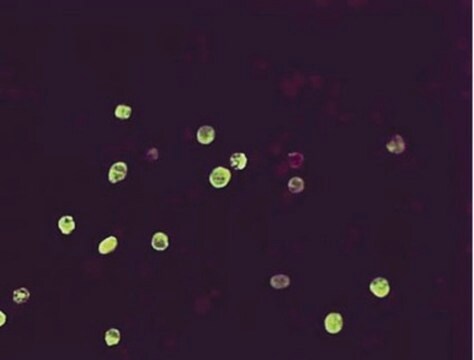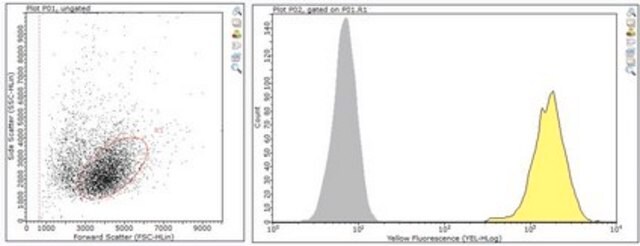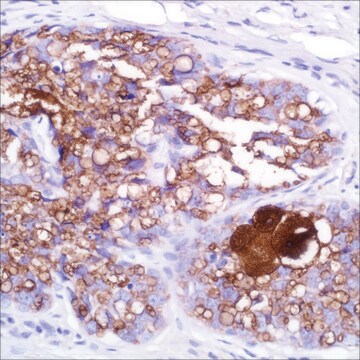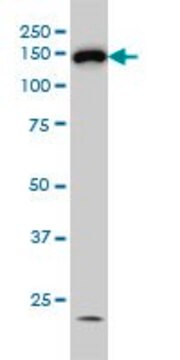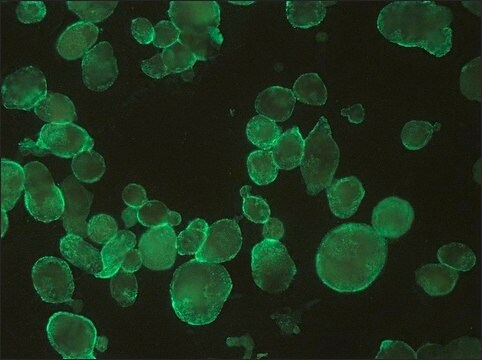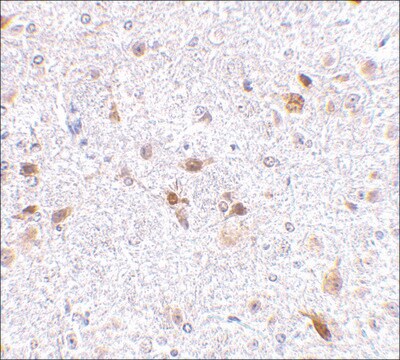MABF1975
Anti-Herpes Simplex Virus Glycoprotein D Antibody, clone LP14
clone LP14, from mouse
Sinónimos:
HSV glycoprotein D
About This Item
Productos recomendados
origen biológico
mouse
Nivel de calidad
forma del anticuerpo
purified immunoglobulin
tipo de anticuerpo
primary antibodies
clon
LP14, monoclonal
reactividad de especies
virus
reactividad de especies (predicha por homología)
all
envase
antibody small pack of 25 μL
técnicas
immunocytochemistry: suitable
inhibition assay: suitable
western blot: suitable
isotipo
IgG2aκ
Nº de acceso NCBI
Nº de acceso UniProt
Condiciones de envío
ambient
modificación del objetivo postraduccional
unmodified
Categorías relacionadas
Descripción general
Especificidad
Inmunógeno
Aplicación
Inflammation & Immunology
Western Blotting Analysis: A representative lot detected Herpes Simplex Virus Glycoprotein D in Western Blotting applications (Lau, S.Y., et. al. (2015). Viruses. 7(3):915-38; Zenner, H.L., et. al. (2011). J Virol. 85(16):8012-21; Pawliczek, T., et. al. (2009). J Virol. 83(21):11254-64).
Western Blotting Analysis: A representative lot detected Herpes Simplex Virus Glycoprotein D in Western Blotting applications (Ren, Y., et. al. (2012). J Gen Virol. 93(Pt 2):319-29).
Immunocytochemistry Analysis: A representative lot detected Herpes Simplex Virus Glycoprotein D in Immunocytochemistry applications (Lau, S.Y., et. al. (2015). Viruses. 7(3):915-38).
Inhibition Analysis: A representative lot inhibited the fusion of cells infected with HSV-1. (Minson, A.C., et. al. (1986). J Gen Virol. 67(6); 1001-1013.
Calidad
Western Blotting Analysis: A 1:2,000 dilution of this antibody detected Herpes Simplex Virus Glycoprotein D in HEK293T cell lysate transfected with HSV gD.
Descripción de destino
Forma física
Almacenamiento y estabilidad
Otras notas
Cláusula de descargo de responsabilidad
¿No encuentra el producto adecuado?
Pruebe nuestro Herramienta de selección de productos.
Certificados de análisis (COA)
Busque Certificados de análisis (COA) introduciendo el número de lote del producto. Los números de lote se encuentran en la etiqueta del producto después de las palabras «Lot» o «Batch»
¿Ya tiene este producto?
Encuentre la documentación para los productos que ha comprado recientemente en la Biblioteca de documentos.
Nuestro equipo de científicos tiene experiencia en todas las áreas de investigación: Ciencias de la vida, Ciencia de los materiales, Síntesis química, Cromatografía, Analítica y muchas otras.
Póngase en contacto con el Servicio técnico